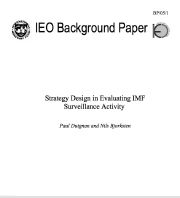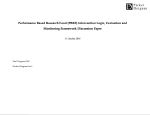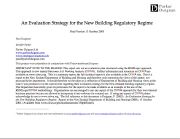International Monetary Fund (IMF) evaluation
The IMF Independent Evaluation Office were looking to develop an evaluation strategy for the International Monetary Fund's national and global economic survelliance work. Evaluating this activity presents the classic evaluation problem of attempting to evaluate whether an intervention is causing high-level outcomes to change. The difficulty in this case, as in many real-world situations, is that the high-level outcome (a well functioning economic system) is not controlled by the IMF - it is only one of the many factors which influence high-level outcomes. This IMF discussion paper uses Systematic Outcomes Analysis (under an earlier name - REMLogic) to work through this issue and provide an approach to monitoring and evaluating the IMF's work in this area. The paper discussing the evaluation design strategy is available here.


